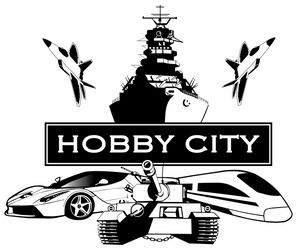
Corgi AA33321 1/72 B-17G Flying Fortress - 43-37756/G '"Milk Wagon"
Die-Cast Model
Corgi AA33321 1/72 B-17G Flying Fortress - 43-37756/G '"Milk Wagon"
The Aviation Archive - Limited Edition
War in Europe (WWII), 1939 - 1945
Boeing B-17G Flying Fortress 43-37756/G '"Milk Wagon"
USAAF 708th BS/447th BG
Rattlesden Airfield, England 1944
PRODUCT INFO
The military airfield at Rattlesden in Suffolk was constructed for American use during 1942 and was classified as an ?A? standard airfield. With three concrete runways and 50 dispersed aircraft hardstanding points, it was initially intended for use by twin engined Martin B-26 Marauder bombers, but when it was later felt that these aircraft would be better suited flying from bases further south, Rattlesden became home for the soon to arrive B-17s of the 447th Bombardment Group. The first bombing mission undertaken by aircraft of the 447th took place on Christmas Eve 1943, when their B-17s were sent to flatten a suspected V-1 flying bomb site near Saint Omer, a mission which would set the tone for a busy few months to come. Fully committed to the campaign in preparation for D-Day, the 447th would be sent against targets such as airfields, rail marshalling yards, suspected rocket sites, submarine pens and naval installations across France, Belgium and into Germany itself, interspersed with joining other units in concentrated attacks against city targets. On D-Day itself, the unit bombed the beachhead sectors in advance of the landings, following pathfinder aircraft for target identification. The weeks following D-Day saw no let-up in mission activity for the Fortresses of the 447th, as they undertook almost daily missions in support numerous strategic objectives, which included the Battle of the Bulge and Operation Varsity. They flew their final combat mission on 21st April 1945, targeting a marshalling yard at Ingolstadt in Germany and by the summer of the same year, all serviceable aircraft were flown back to the US, where the 708th Bomb Squadron was inactivated on 7th November 1945.One of the most enduring features of US air operations from Britain during the Second World War was their use of nose artwork to adorn many of their combat aircraft, a practice which was generally frowned upon by RAF hierarchy, but seemingly ignored by their American counterparts. The adoption of nose artwork is thought to have taken many forms, from being a good luck charm for the crew or highly visible warning to enemy fighter pilots to leave them alone, if they know what?s good for them. They could also have been a simple reminder of home, which must have seemed such a long way away during the savage air fighting at this stage of the war. Whatever the reason for applying it, the practice ensured that some of these aircraft and the men who flew them, will be remembered for many generations to come. Boeing B-17G-70-BO serial number 43-37756 was built at Boeing?s Seattle factory in the early spring of 1944 and delivered to the USAAF at Dow Field, Maine on 18th May the same year. She was assigned to the 708th Bomb Squadron, 447th Bomb Group and later flown to Rattlesden, Suffolk, England, where she would join the rest of her unit already engaged in combat. Flying her first combat mission on 20th June 1944, she would be in the air again the following day, this time on a raid to the Big One - Berlin, in the hands of a different crew. This crew had recently transferred to Rattlesden from the 15th Air Force, flying bombing missions from bases in Italy. As this was quite unusual for base personnel, on landing back following the Berlin mission, they were asked by members of the ground crew how did it compare to flying missions from the opposite side of Europe and they replied, ?It was like a ?Milk Run?, obviously a little tongue in cheek, as this was a colloquialism for a mission which was without incident and one which incurred no casualties. This off the cuff remark would stay with this particular Flying Fortress from that point onwards and 43-37756 would later benefit from the addition of some impressive and rather unique artwork. She would be adorned with a friendly looking cartoon cow and the words Milk and Wagon painted either side of it. For every successful mission flown, a new milk bottle would be added to the scoreboard on the portside nose of the bomber, with the white bottles painted over a black background, so they could be more easily seen. If the addition of this nose artwork was intended to bring the crew luck, then this was a shrewd move, as ?Milk Wagon? was definitely seen as being a lucky ship. She would eventually set a record for a Fortress in the 447th Bomb Group, as she racked up no fewer than 129 missions without suffering a single abort due to mechanical issues, testament not only to the strength of the B-17, but also the ground crews who kept her in the air. Following the end of hostilities, Milk Wagon was flown back to the US and despite her impressive war record and distinctive nose artwork, was sent to Kingman Storage Depot 41 in the Arizona desert for scrapping, a fate which awaited so many former wartime military aircraft.
TECH SPECS
Item Height - Without Packaging (cm): 7
Item Width - Without Packaging (cm): 43
Item Scale: 1/72
Finish: Painted
Colour: Green
Wingspan (mm): 43
Detailed Crew Figures: Yes
Fuel Tanks: Yes
Opening Bomb Bay Doors: Yes
Rotatable Propeller(s)/Rotor(s): Yes
Rotatable Turret(s): Yes

